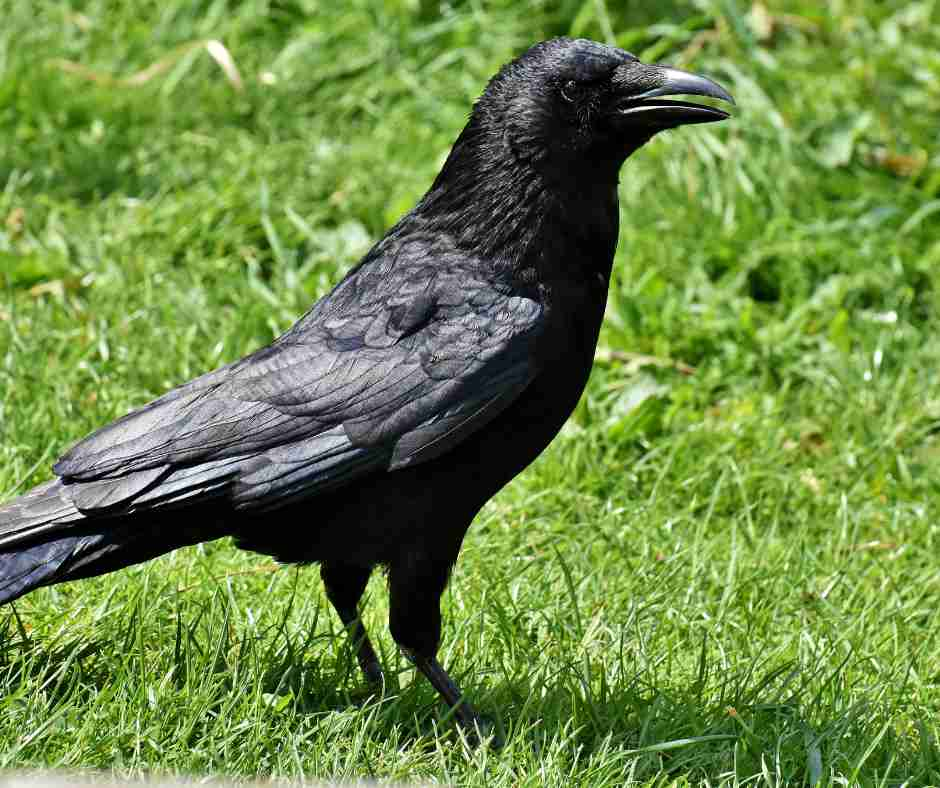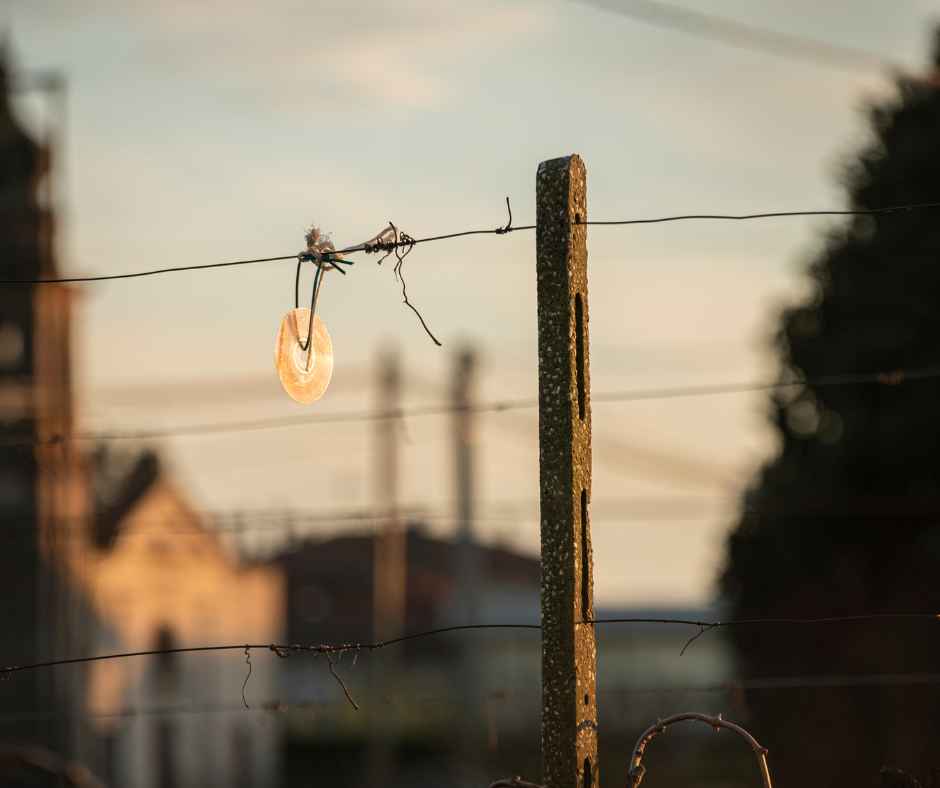Hey there, fellow bird enthusiasts! Are you concerned about keeping those adorable baby birds in your yard safe from crows? Wondering how to protect baby birds from crows? You’re not alone!
Protect baby birds from crows using physical barriers (fishing line grids, crow-proof nest boxes), visual/auditory deterrents (dead crow decoys, shiny objects), and environmental adjustments (diverse plants, less lighting).
This blog will discuss how to change deterrents and regularly promote a balanced ecosystem for coexistence. Get ready to dive into a world of practical, bird-friendly strategies that keep those little ones chirping happily away from harm!
Understanding the Threat
Crows are super intelligent birds from the Corvid family. But did you know they can be dangerous to baby birds in your yard? Yep, crows like to eat all sorts of things, and they might go after baby birds for a quick snack.
You might wonder, do crows eat other birds? Sadly, the answer is yes. They eat many things, including dead animals, trash, and sometimes smaller birds like sparrows and pigeons.
But don’t worry! There are lots of ways to keep baby birds safe from crows. We must understand how crows act and devise good plans to protect the little birds. We can use things like particular barriers, change our gardens, or use clever tricks to keep crows away.
Let’s check out these ideas and see how to protect those baby birds from sneaky crows!

Effective Strategies to Deter Crows
Physical Barriers and Deterrents
Creating physical barriers can be a game-changer in protecting baby birds. Imagine setting up a grid-like pattern with fishing lines above your garden. It’s like an invisible shield that keeps those big crows out, allowing the smaller, more agile birds to pass through easily.
This method is particularly effective as it creates a physical obstacle that crows, being larger birds, find hard to navigate.
And then there’s the ingenious idea of crow-proof nest boxes. By designing these boxes to be profound, around 6 inches or more from the entrance to the bottom, you make it nearly impossible for crows to reach in and grab the baby birds.
Removing any perches or ledges from these boxes is also a clever move. It prevents crows from sitting and waiting for an opportunity to attack the nestlings. Think of it as designing a safe fortress for those little birds.
Visual and Auditory Deterrents
Now, let’s talk about tricking the crows. Visual and auditory deterrents can be surprisingly effective. Crows, for instance, are wary of their dead. Placing fake dead crow decoys can send a strong message to any curious crows. It’s like putting up a ‘danger’ sign that tells them to steer clear.
Shiny objects can also be your allies in this battle. Hanging reflective items like old CDs, aluminum foil strips, or commercial bird scare tape can create a light effect that disorients and repels crows. They rely heavily on their vision for hunting, and the glare from these objects can be off-putting for them.
But remember auditory deterrents. While crows are known for their intelligence, they can still be startled by unexpected noises. Wind chimes, ultrasonic bird repellers, or even playing recordings of crow distress calls can create an unwelcoming environment for these birds.
Remember, the key is to keep changing these deterrents. Crows are intelligent and may get used to a particular sound or sight if it remains constant.

Environmental Adjustments
Having many different plants and trees in your backyard is a great way to keep crows away. It’s like building a safe place for smaller birds. When there are many places for them to hide and make nests, it’s more challenging for crows to find them.
Also, think about not having too many bright lights outside. Crows don’t fly well in the dark, so they might not come around as much if your yard is darker. This is helpful when baby birds must be extra safe in their nests.
Active Deterrence Methods
Sometimes, taking an active role can be necessary to keep the crows at bay. Have you ever thought of using light beams to annoy crows? Shining lights in their eyes at night is effective. If done consistently, crows might decide that your property is too much trouble to bother with.

Engaging your community can also amplify your efforts. Setting up a neighborhood watch for bird nests can create a collective effort to protect baby birds. Sharing tips and strategies with your neighbors can lead to a larger area being safeguarded against crows, making your community safer for all birds.
Feeding Strategies and Bird Care
Feeding birds while keeping crows away can be quite the balancing act. The trick lies in using bird feeders that are specifically designed to be crow-proof. These feeders usually feature a wire mesh or a mechanism that allows smaller birds to feed while keeping the larger crows out. It’s a clever way to ensure your small feathered guests can dine without unwelcome intrusion.
Also, the strategic placement of your bird feeders can make a significant difference. Placing them in covered areas or amidst dense foliage can make them less visible from above, reducing the likelihood of crows spotting them. It’s like setting up a hidden buffet for your tiny bird friends, away from the prying eyes of crows.
Understanding Crow Behavior
To protect baby birds effectively, it’s essential to understand crow behavior. These birds are intelligent and adaptable, making them formidable opponents.
They are omnivorous, feeding on various foods from carrion to small animals and, unfortunately, baby birds. We can better strategize our protection methods by understanding their feeding habits and behavioral patterns.
Coexisting with Crows
As much as we need to protect baby birds, we must remember that crows are vital to our ecosystem. They play an essential role in controlling pests and cleaning up carrion.
The goal is not to eliminate crows but to find a balance where all birds, including the baby ones, can coexist safely. By employing non-lethal and humane methods to deter crows, we contribute to maintaining this balance.
Specific Crow Deterrents
What Do Crows Hate The Most?
Crows, believe it or not, have a few dislikes. Shiny objects are high on this list. The reflection and glare can disorient them, making your yard a less attractive place to hang out. Loud, unfamiliar noises are also effective in keeping crows at bay.
They are cautious birds and often avoid areas with strange or jarring sounds. However, crows are quick learners, so it’s crucial to keep changing your tactics to stay ahead.
What Smells Do Crows Hate?
Interestingly, like many birds, crows have a keen sense of smell. Certain scents, such as peppermint, cedar, and garlic, are known to be unpleasant to them.
Using these natural repellents in your garden can be a subtle yet effective way to discourage crows. It’s a gentle method that keeps your garden bird-friendly while deterring unwanted guests.
People Also Asked
Will these methods harm the crows?
Not at all! These strategies are designed to deter crows in a non-harmful way. The aim is to create a safe space for all birds in our backyards without causing harm to any of them.
Can I use sound devices to keep crows away without disturbing my neighbors?
Yes, you can use ultrasonic bird deterrent devices. They emit sounds at frequencies inaudible to humans but are effective against crows, making them a considerate choice for neighborhood settings. Just ensure they are strategically placed for maximum effect.
How often should I change or rotate my crow deterrents?
Change or rotate your deterrents every couple of weeks. Crows adapt quickly to static deterrents. Regularly updating the types and locations of your deterrents, like moving decoys or alternating reflective items, helps keep them effective.
Are there any natural predators of crows that I can attract to my garden to help protect baby birds?
Bringing in big birds like hawks or owls to scare away crows is not the best idea. These big birds can also be a danger to smaller birds. A smarter way is to make your garden a place where many birds can find food and a safe spot to stay. It helps keep the number of crows down in a natural way.
Wrap Up
And there we have it – a range of intelligent and effective ways to protect those adorable baby birds from cunning crows. We can make our backyards safe havens for all birds with creativity, understanding of crow behavior, and community effort.
Remember, it’s all about coexistence and finding a balance in our shared environment. Happy bird watching, and let’s keep those nests safe!
Additional Resources
For more information and further reading, check out these authoritative sources:
Audubon Society’s Guide to Bird-Friendly Yards

